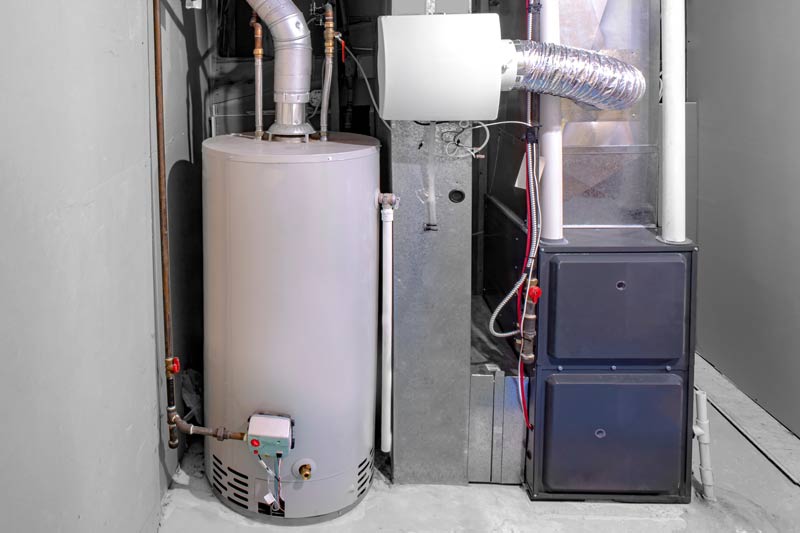
How to Calculate Furnace Size for your House.
The Tips you Need to Get the Right Furnace.
Your furnace is like the heart of your home’s HVAC system. It pumps all the air from the intake of the house, through the ducts, and into the inside of your house.
Your choice of furnace also depends on how much heat you want in your home since a furnace is the one that provides heat to your home. So it’s pretty important to select the right one for your home.
So how do you know what size of furnace you need for your home?
Today, we will discuss finding the correct size furnace for your home. We will also provide tips to assist you in selecting the best one to install.
Your home size determines your furnace size:
The size of your home is the most important factor you need to keep in mind while looking for the furnace. Just make sure that your furnace is adequately sized to effectively heat your entire home during the winter season.
That’s why it is important that you know the square footage number of your home to get the right baseline for the size of the furnace you need.
Professionals recommend that a furnace has 30 to 60 BTUs per square foot to effectively heat a home. For example, a 2,000 square foot home would require a furnace with an output of 60,000 to 120,000 BTUs (2,000 sq ft x 30-60 BTUs/sq ft). This range considers things like insulation, weather, and ceiling height, which can impact how much heat a home needs.
What happens when a furnace is not the correct size for your home:
Now that we understand the important factors for your checklist when finding the right furnace for your home. So let’s discuss why having the right size of furnace is important for your home.
If your furnace is not the right size for your home, speak with an HVAC expert from Tempasure. We can help you find the correct size and replace the old one if needed.
What happens when the furnace is too small?
If the furnace size is too small then it will struggle with heating the house. These are the some issues you might encounter:
- Inadequate Heating: A furnace that is too small will struggle to heat the home adequately, especially during colder weather. This can result in uneven heating and discomfort for occupants.
- Increased Energy Consumption: An undersized furnace may run longer and more frequently in an attempt to meet the heating demands of the home. This can lead to increased energy consumption and higher heating bills.
- Shortened Lifespan: The increased workload placed on an undersized furnace can lead to premature wear and tear on its components, potentially shortening its lifespan.
- Poor Indoor Air Quality: A furnace that is too small may not be able to properly circulate and filter the air in the home, leading to poor indoor air quality.
- Frozen Pipes: In extreme cases, an undersized furnace may struggle to maintain a sufficient temperature in the home, leading to the risk of frozen pipes and other cold-weather issues.
- Your Furnace breaks down more often or the parts don’t last till they are supposed to.
What happens when the furnace is oversized?
If the furnace is excessively oversized, then it will be inefficient and will perform a short cycle. This can all lead to a whole slew of problems. Below are some cases you might encounter:
When a furnace is oversized for a home, it can lead to several issues:
- Short Cycling: An oversized furnace will heat the home quickly and then shut off, leading to short cycling. This frequent on-off cycling can cause wear and tear on the furnace components and reduce its lifespan.
- Uneven Heating: A furnace that is too large may heat the home unevenly, with some areas being too warm while others remain cool. This can result in discomfort for occupants.
- Increased Energy Consumption: Contrary to popular belief, an oversized furnace can actually increase energy consumption. The furnace will run in shorter bursts but more frequently, which can be less efficient than longer, less frequent cycles.
- Higher Operating Costs: Due to increased energy consumption and wear on the system, an oversized furnace can lead to higher heating bills and maintenance costs over time.
- Reduced Comfort: In addition to uneven heating, an oversized furnace can lead to reduced comfort due to frequent temperature fluctuations and a lack of consistent warmth.
How to decide the right size:
Now that we have discussed everything that you need to keep in mind while finding the right furnace, just put together all the tips to get the right furnace and you will find the right size for your furnace.
If you’re not sure about the right size for your furnace, contact Tempasure’s HVAC professionals. They’ll help you find the best size for your home.

